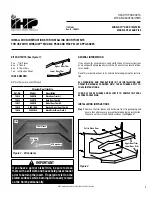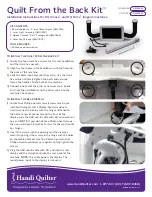
AMER-EN-TM-ODY July 2021
www.odysseybattery.com
G. PARASITIC LOADS
In many cases batteries that are apparently at rest may be supplying a small amount of current to
connected equipment such as radios, clocks and security systems, to name just a few examples.
Modern vehicles have multiple on-board computers that require small amounts of power to keep them
alive. These small currents are collectively referred to as parasitic loads and may be detrimental to the
life of a battery if they are not accounted for in the design of the system.
Over time these small loads – typically tens of milliamps (mA) – will consume significant amp-hours,
which results in the battery voltage decreasing. Consider a boat that has a parasitic draw of 20mA and
is docked for five months with the battery connected to the load. In that 150-day period that parasitic
load will consume more than 70 amp-hours.
There are three ways to ensure that batteries are not being drained by parasitic loads in the system.
1. Physically disconnect the battery from the load after fully charging it. A master disconnect
switch is also an effective countermeasure.
2. Periodically give the battery a freshening charge, using the charging and storage guidelines
discussed above.
3. Connect a trickle charger for AGM batteries when the battery is stored, using the charging
guidelines discussed above.
H. TESTING
There are several different ways to test AGM
2
batteries. Depending on the time and equipment avail-
able, one may choose to perform either a capacity test, a ½CCA Load Test or a Conductance Test.
These options should help determine whether the battery returned by the customer has reached its
end of life or simply needs a full recharge. For all methods, the battery should be as fully-charged
before testing. Following are details related to each test method.
RECOMMENDATION:
Testing should be completed on a clean/main battery terminal surface, not
a steel stud. Testing batteries individually in multiple battery situations is best. At minimum, each
battery must be disconnected at one terminal (the same polarity).
1.
Capacity Testing: This method tests the performance of the battery based on its Reserve
Capacity (RC) rating, which means the test may be more time consuming, however it is the
preferred test method for a state of health check. The equipment needed to perform this
type of testing is called a discharger tester. The battery should be fully charged before using
this test method. Discharge testers are designed to apply a constant current load to a fully-
charged battery until the battery voltage reaches 1.75 volts per cell (10.5 volts per battery) or
other appropriate end point voltage inline with published performance tables, which is 100%
discharged. The length of time the discharge tester runs until 1.75 volts per cell is reached
should be compared to the battery’s rated RC. Batteries which do not provide at least 80% of
their rated runtime are considered failed.
2.
½CCA Load Test: This method tests the performance of the battery based on its CCA rating
and is much faster than capacity testing described above. The equipment needed to perform
this type of test is called a ½CCA load tester. For accurate testing, the battery must be at least
75% charged, which for AGM
2
batteries means having an OCV of 12.6 volts or higher.
To perform the test, the CCA rating of the battery must be programmed into the tester. These
testers apply half of the battery’s CCA rating to the battery for 15 seconds. After 15 seconds,
the battery voltage should be above 9.6 volts if the temperature is 70°F (21°C) or warmer; voltage
12
Summary of Contents for NSB-AGM
Page 1: ...AGM2 Technical Manual...


































